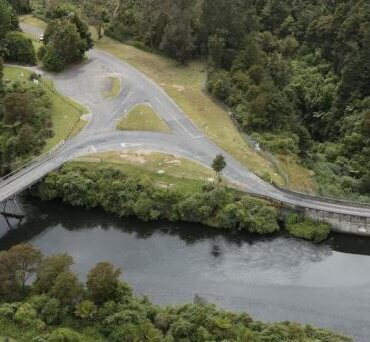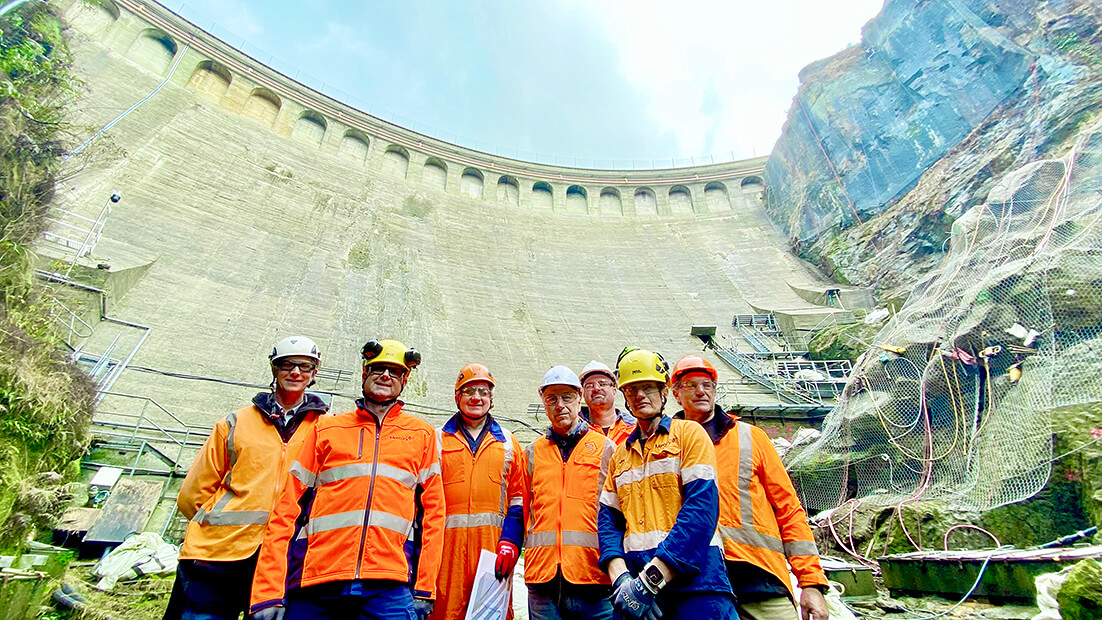
Arapuni Dam
Mercury Energy is two weeks into a jet grouting trial at its Arapuni hydro dam, laying the groundwork for $120 million major remediation work scheduled to begin next year.

Project team members, from left: Mike Francis, Tom Newson, Peter Amos, Marco Lucchi, site manager Shaun Matthee, Jane Ganley and Giovanni Matassoni during a site visit to the toe of Arapuni Hydro Dam earlier this month. Photo: Supplied
Principal project manager Tom Newson said jet grouting is a soil improvement technique used to strengthen and stabilise the ground.
It is typically used in construction and geotechnical engineering to help improve poor soil conditions, water seepage, and to reinforce foundations.
Mercury staff presented at Waipā District Council earlier this month to provide councillors with a project update.
“Jet grouting has been used in several hydro dams around the world, and we want to run a trial to see how well it works with the geology at the Arapuni Hydro Dam.”
An engineering study shows the dam is safe and fit for everyday use, but work needs to be done to improve the left abutment to protect it from the risk of water seepage.

Project zone at Arapuni
“The jet grouting method will enable us to replace the original seepage cutoff wall with a new one.”
The jet grouting trial started mid-July and will take about three weeks, followed by a programme of verification tests over four-to-six weeks.
Residents may notice a specialised rig on site – originally from Hong Kong – along with new support buildings for the project team.
“We have limited public car parking on the crest of the dam and people will still have access to the walking paths towards Powerhouse Road,” said Newson.
Arapuni Dam was built in the 1920 and was the first government-built hydroelectric station on the Waikato River and the second after the now closed Horahora station.
Seepage was first identified at Arapuni as early as 1929. There have been a number of episodes of remedial work carried out over the years. From 2005 to 2006 a long term definitive programme was carried out to prevent further seepage.
Meanwhile Mercury is planning a community event for next month to celebrate the end of the $90 million Karāpiro Dam work.
Once finished, the Karāpiro station will generate an additional 16.5MW -boosting output from 96MW to 112.5MW – and increase average annual energy production by 32GWh to 537GWh.
Karāpiro, the third power station built on the Waikato Hydro System, has been supplying electricity since 1947. Two of its three generation units have already been replaced and commissioned in 2023 and 2024. The final stage began in October and is on track for completion by September.

Arapuni Dam








